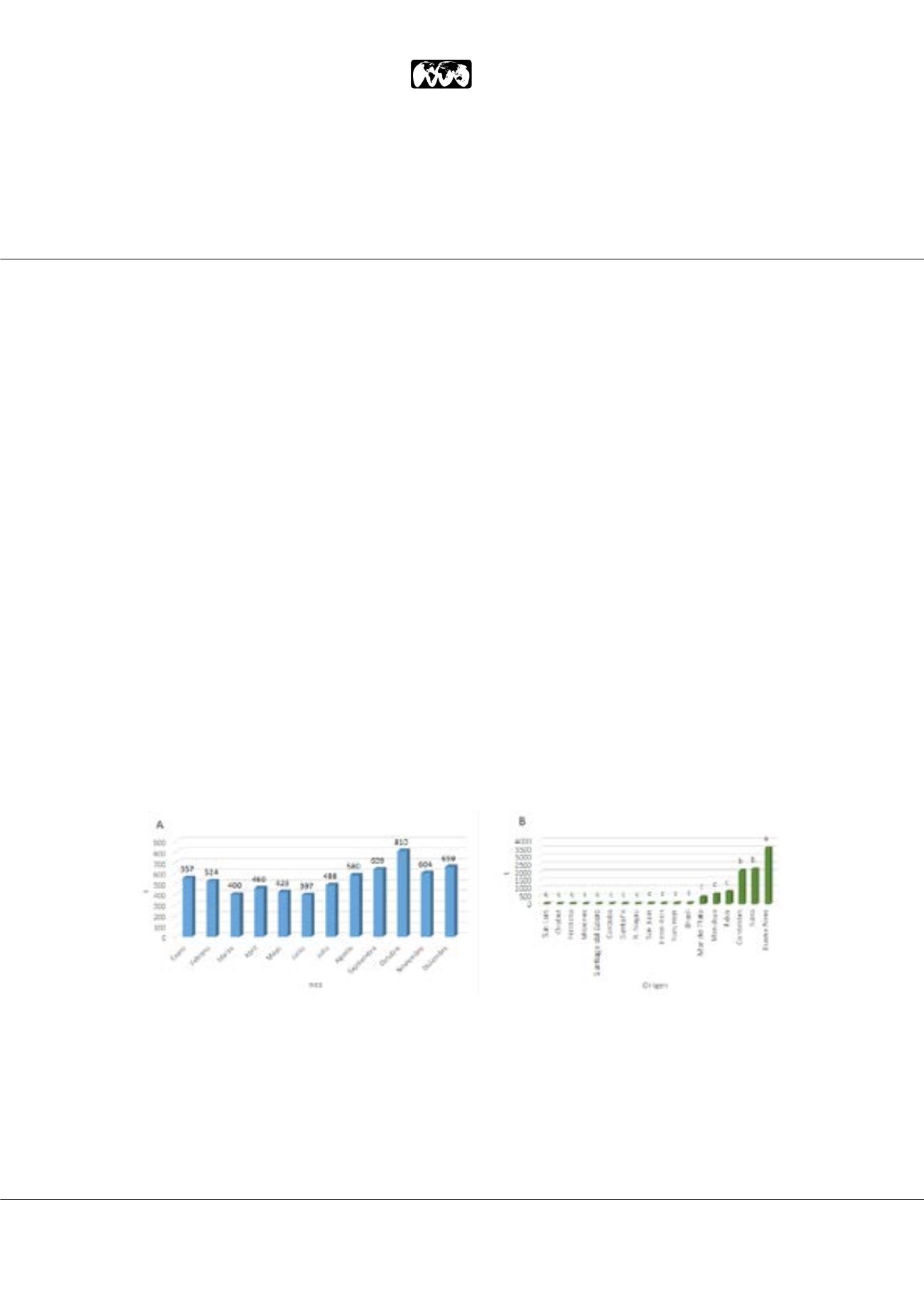

Page 103
conferenceseries
.com
Volume 6, Issue 4 (Suppl)
Agrotechnology, an open access journal
ISSN: 2168-9881
Agri 2017
October 02-04, 2017
allied
academies
10
th
International Conference on
AGRICULTURE & HORTICULTURE
October 02-04, 2017 London, UK
Evolution of the tomato market in Argentina (
Ex aecquo
)
Ana María Castagnino
1
, Karina E Diaz
1
, Sabrina Mondini
1
, W John Rogers
1
, Andrea Guisolis
1
, Oscar Liverotti
2
, José Fernandez Lozano
3
and
Mario E
Peralta
4
1
UNCPBA, Argentina
2
Pontifical Catholic University of Argentina, Argentina
3
University of Buenos Aires, Argentina
4
University of Belgrano, Argentina
T
omato is the principal greenhouse vegetable grown in Argentina. The aim of the current work is to analyse tomato market
evolution in this country, based upon volumes received by the Buenos Aires Central Market, the main national point of
reference. The following aspects were evaluated: total commercial volumes (CV) 1999-2016, evolution (E) and mean prices
(MP), principal varieties (V) commercialized in 2016, origin (O), distribution by province of origin (DP) and the proportion
that tomato comprises of the total volume (TV) of the horticultural produce commercialized in the reference period. For the
factors evaluated, one-way analysis of variance was carried out on the tonnage values. The VC was 119,600, with a decrease
over the period of 18% compared to the first year (1999: 142,968t and 2016: 117,744 t/year). In 2016, the mean monthly E
was 9812t, where the following months exceeded this value, without significant differences between them: October-14586,
December-11870, September-11494, November-10865, August-10446 and January-10027 t. The annual MP was 0.62 US$kg
-1
,
which was exceeded in September (1.03), May (0.82), October (0.80) and November (0.63). For DP, the highest volumes were
observed for Buenos Aires: 3936t
a
, Salta: 2187t and Corrientes: 2081t
b
, with the remaining origins in the following order of
importance, without significant differences between them: Jujuy-774, Mendoza-625, Brasil-72; Tucumán-48; Entre Ríos-29;
San Juan-28; Rio Negro-9.82, Santa Fé-8; Córdoba-5.15; Santiago del Estero-2.82; Misiones-2; Formosa-1.4; Chubut-0.75 and
San Luis-0.2 t
c
. Overall, tomato represented 14% of the TV (850240t) commercialized (16.7% in 1999 and 13.8% in 2016).
For V, the monthly volumes gave differences for Larga Vida (October
a
, November, July, February, September, August and
June
ab
); for Platense (January and December
a
, April and February
ab
) and the rest
b
. For origin, differences were found for all
varieties: Larga Vida: Corrientes
a
and the rest
b
, Perita: Salta
a
, Jujuy, Buenos Aires
b
and Mendoza
bc
, Cherry: Buenos Aires
a
, Salta,
Corrientes
b
and Jujuy
bc
, Redondo: Buenos Aires
a
, Corrientes
b
and Salta
ab
. These results provide evidence of the positioning of
tomato throughout the year in the Argentinean market.
Biography
Ana María Castagnino is a Horticulture Specialist (UNIPI, Italy) with a Master's Degree in Business Management (UNCPBA, Argentina), and is Professor of
Horticulture at UCA, Buenos Aires and Associate Professor at UNCPBA. She is a member of CRESCA (Regional Centre for the Systemic Study of Agro-Food
Chains) and directs the programme "Promotion of the production and consumption of asparagus and other non-traditional vegetables".
amc@hotmail.comAna María Castagnino et al., Agrotechnology 2017, 6:4(Suppl)
DOI: 10.4172/2168-9881-C1-028
















